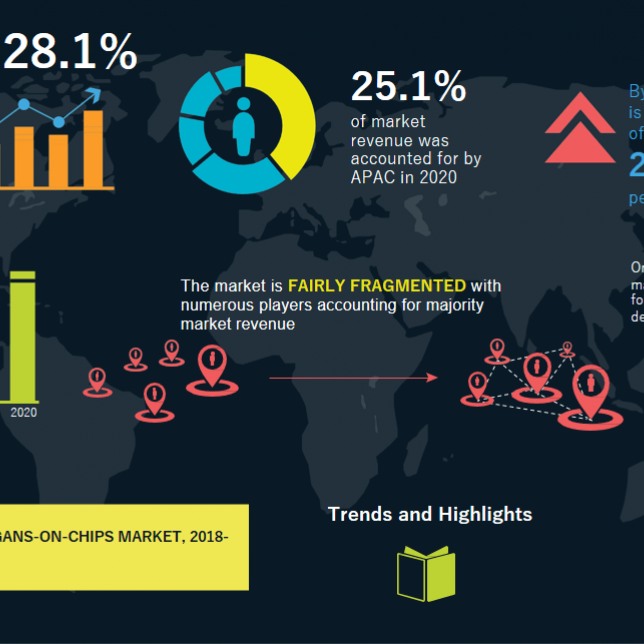Organs-on-Chips Market Research Report
The global organs-on-chips market size is expected to reach USD 209.4 Million at a steady CAGR of 28.1% in 2028, according to latest analysis by Emergen Research. Steady market revenue growth can be attributed to growing demand for organs-on-chips for drug development and screening to reduce monetary losses associated with drug failures. The cost-effectiveness, miniaturized scale, and accurate control of organs-on-chips over the mechanical and chemical microenvironment are garnering significant traction across pharmaceutical and biotechnology companies to reduce rate of drug failure. Currently, two-dimensional novel drugs screening and in-vitro pharmacokinetics and pharmacodynamics analysis are prevalent practices before a drug can be sent to the next phase, such as preclinical testing phase. However, human body organs are three-dimensional entities and their intricate behavior cannot be effectively modeled in two-dimensional cultures. Use of organs-on-chips provide a microenvironment that mimics the pathophysiological conditions of the human body and thus, helps in saving substantial financial losses by substituting the trial and error method with a more reliable and efficient process.
Key players in the organs-on-chips market include MIMETAS BV, SynVivo Inc., Emulate Inc., InSphero AG, CN Bio, Nortis Inc., Organovo Holdings Inc., TissUse GmbH, AxoSim Inc., and Kirkstall Ltd.
Some Key Highlights From the Report
- In March 2021, CN Bio, which is a company engaged in the development of organs-on-chips, announced the commercial launch of PhysioMimix, which is an innovative organs-on-chips micro-physiological system.
- Cardiovascular disease is a leading cause of deaths worldwide. The advent of organs-on-chips has allowed conducting of invitro cardiac tissue’s bionic researches. A heart-on-chip reproduces heart mechanisms to test drug compounds quickly and study the heart cells’ response. The microphysiological heart-on-chip provides a simple and cost-effective means to study cardiovascular diseases, develop drugs and test cardiotoxicity, provide personalized medication, and regenerate damaged tissues.
- Organs-on-chips, including liver, lungs, brain, or heart deliver an enhanced functionality level and biology control to imitate the effects that would occur by the application of a personal care and cosmetic product in the human biological system and, thus, helps to predict effectiveness of a cosmetic product and its side-effects on humans.
- Organs-on-chips market in North America accounted for largest revenue share in 2020, attributed to increasing research and development activities of organs-on-chips, rapid adoption of advanced technologies, and increased investments by pharmaceutical companies in drug discovery. In addition, presence of leading firms providing organs-on-chips are causative of robust market growth in the region.
- To get leading market solutions, visit the link below: https://www.emergenresearch.com/industry-report/organs-on-chips-market
Emergen Research has segmented the global organs-on-chips market on the basis of type, application, end-use, and region:
- Type Outlook (Revenue, USD Million; 2018–2028)
- Liver-on-Chip
- Multiple Organs-on-Chips
- Kidney-on-Chip
- Heart-on-Chip
- Lung-on-Chip
- Intestine-on-Chip
- Others
- Application Outlook (Revenue, USD Million; 2018–2028)
- Drug Discovery
- Physiological Model Development
- Toxicology Research
- End-Use Outlook (Revenue, USD Million; 2018–2028)
- Pharmaceutical Firms
- Research Institutes
- Personal Care Industry
- Others
- Regional Outlook (Revenue, USD Million; 2018–2028)
- North America
- U.S.
- Canada
- Mexico
- Europe
- Germany
- U.K.
- France
- Italy
- Spain
- Sweden
- BENELUX
- Rest of Europe
- Asia Pacific
- China
- India
- Japan
- South Korea
- Rest of APAC
- Latin America
- Brazil
- Rest of LATAM
- Middle East & Africa
- Saudi Arabia
- UAE
- South Africa
- Israel
- Rest of MEA
- North America
